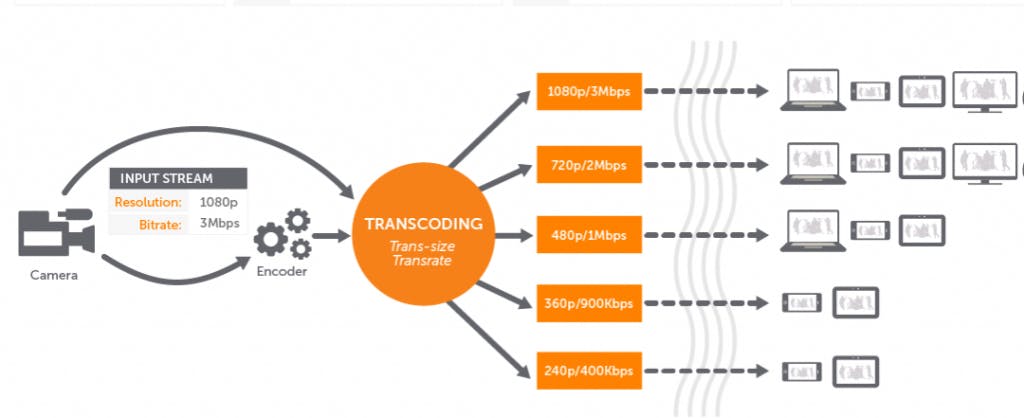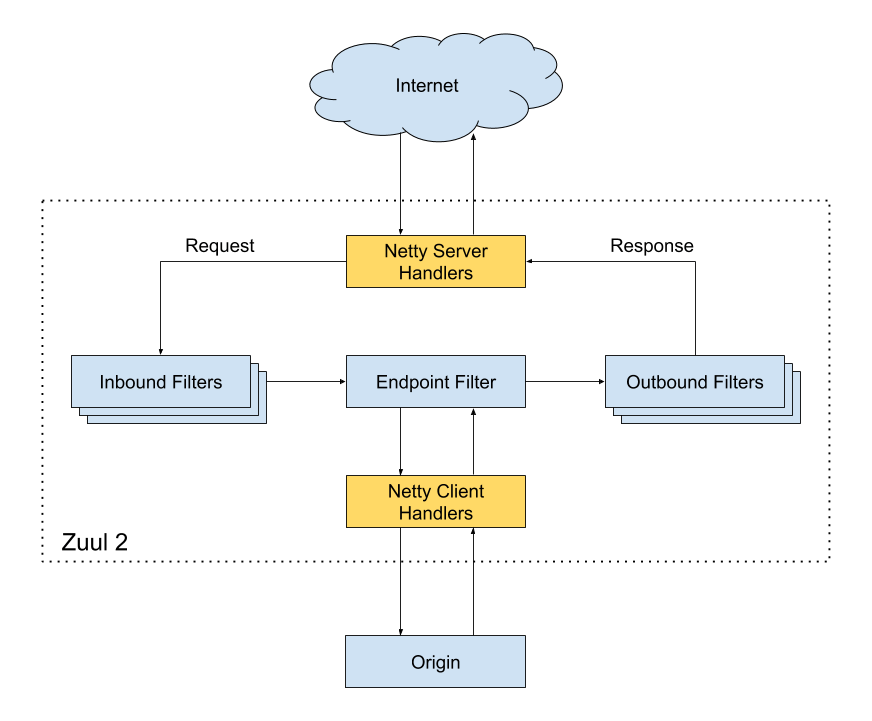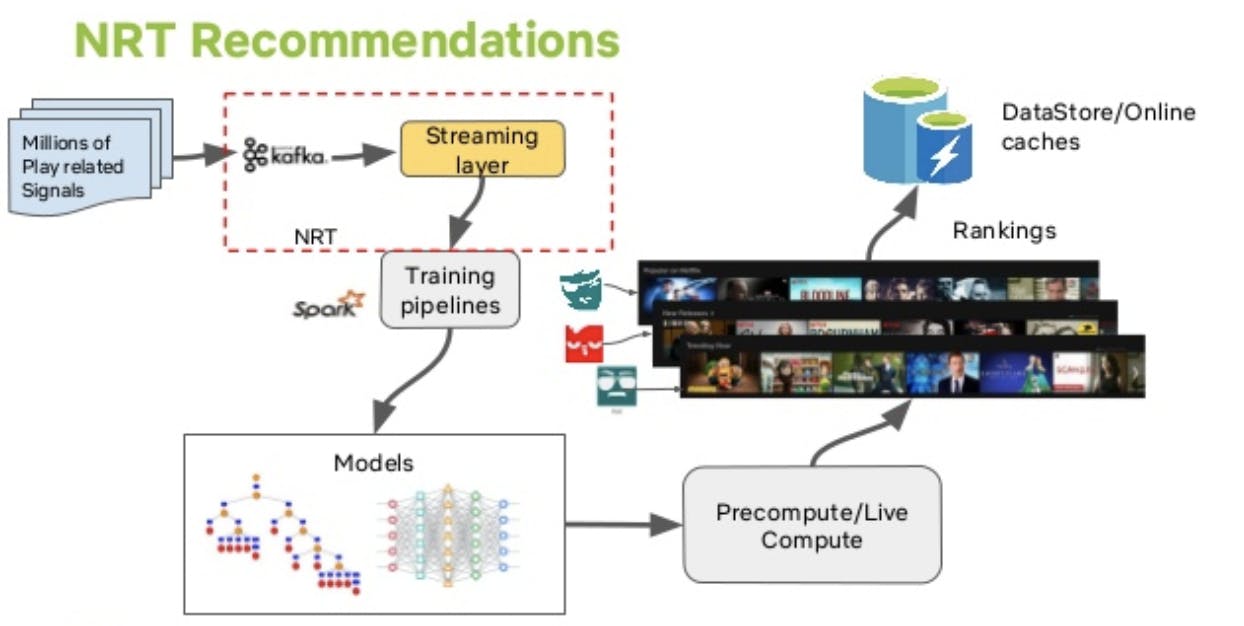In today's fast-paced digital landscape, delivering a seamless and reliable streaming experience to millions of viewers worldwide is no small feat. Among the many companies that have risen to this challenge, Netflix stands as a shining example of effective system design. With over 200 million subscribers globally, Netflix has mastered the art of building a robust and scalable streaming platform. In this blog post, we'll take a closer look at the key principles and components of the Netflix system design.

High-Level System Overview
At the heart of Netflix's system are three fundamental pillars: Open Connect (OC), backend services hosted on Amazon Web Services (AWS), and the myriad of client devices through which users access content.
1. Open Connect (OC): Open Connect is Netflix's proprietary global Content Delivery Network (CDN), strategically positioned across a distributed network of nodes worldwide. It serves as the backbone of Netflix's content delivery, ensuring cost-effectiveness, exceptional video quality, and scalability.
2. Backend Services on AWS: AWS provides a robust infrastructure to host a wide range of backend services. These services encompass user authentication, personalized recommendations, billing management, customer support, and more. They orchestrate activities that precede video playback.
3. Client Devices: The endpoint of user interaction, client devices span a wide spectrum, including smart TVs, laptops, gaming consoles, and mobile phones. These devices enable a personalized and immersive streaming experience.
Onboarding Movies/Videos
The journey begins with the ingestion of movies and videos. These video files are subjected to a process called transcoding. Transcoding is a transformative procedure that optimizes the videos for compatibility with a wide array of devices. This is necessary because original video files come in different formats and resolutions. Transcoding ensures that these videos are converted into suitable formats, bitrates, and resolutions, ensuring that they can be seamlessly viewed on various devices.

Open Connect Transcoding
Once the videos have undergone transcoding and are now in formats tailored to different platforms and devices, they are distributed to Netflix's Open Connect servers located worldwide. The Open Connect Content Delivery Network (CDN) infrastructure is robust and efficient. It ensures rapid and reliable delivery of video content to users, regardless of their geographical location.
Client Request Handling
When a user accesses the Netflix application, the orchestration happens through Amazon Web Services (AWS). AWS is responsible for coordinating various activities, such as user authentication, account-specific recommendations, and content retrieval. The app interfaces with the Open Connect network to determine the most suitable Open Connect server, video format, and bitrate for smooth video playback. This process ensures that the user receives content optimized for their specific device and network conditions, offering a seamless streaming experience.
Recommendation System
A pivotal element of Netflix's service is its recommendation system. This system leverages a combination of data, including AWS data, user search history, and individual viewing preferences. Through the use of technologies like Hadoop and machine learning models, it tailors content suggestions to each user's unique tastes and interests. This highly personalized approach is central to keeping users engaged and satisfied with the platform.

Continuous Iteration
The operation of Netflix is a dynamic and iterative process. The interaction loop involves transcoding to adapt content for different devices, efficient Open Connect content delivery, and the personalization of recommendations. This continuous feedback loop ensures that the ecosystem is ever-evolving and enhancing user engagement and satisfaction. As users watch more content and interact with the platform, Netflix's algorithms learn and adapt, refining the recommendations and improving the overall streaming experience.
Architecture Highlights and Key Technologies
Netflix's architecture is marked by ingenious solutions that underpin its reliability and scalability:
- Microservices: Netflix's architectural backbone is built on microservices. These are small, self-contained services that handle specific functions. By breaking down the application into microservices, Netflix gains several advantages. Each service can be scaled independently, allowing the platform to handle increased traffic efficiently. Additionally, if one service encounters an issue, it doesn't disrupt the entire system. Load balancing is a crucial part of this architecture, ensuring that traffic is evenly distributed among these microservices to prevent overloads and maintain optimal performance.

- Databases:
MySQL: Netflix uses MySQL, powered by the InnoDB storage engine, hosted on Amazon Web Services (AWS) EC2 instances for certain data storage needs. This includes managing movie titles, billing information, and transaction data. MySQL is chosen for the User Service because of its strong ACID (Atomicity, Consistency, Isolation, Durability) properties, which are vital for ensuring data consistency and reliability.
Cassandra: For managing user history and large-scale data, Netflix turns to Cassandra, a distributed NoSQL database. Cassandra is well-suited for handling large volumes of data and optimizing read request latency, making it a suitable choice for this use case.
- Elastic Load Balancer (ELB): Load balancing is a critical component of Netflix's system design. ELB ensures that traffic is evenly distributed across the microservices. This prevents any single service from becoming overwhelmed and helps maintain system availability and performance. It's an essential element to cope with sudden surges in user traffic, such as those during popular content releases.

- EVCache: Netflix employs EVCache, a highly scalable memcache-based caching solution, to accelerate access to frequently used data in their cloud architecture. This caching is vital to improve data access times, especially for information fetched from databases and AWS services. EVCache stores short-lived, volatile data as an in-memory key-value store and serves over 200,000 requests per second with high cache hit rates. It's designed for high availability, elasticity, and low operational costs. A Java client manages CRUD operations, automatically handling server changes and data replication. Netflix's centralized administration and monitoring tools ensure efficient cluster management and typical cache hit rates are above 99%.

Stateless Services: Many of Netflix's services are designed to be stateless. Stateless services are quick to respond to requests, and they can be easily replaced or rerouted in the event of a server failure. This design choice enhances the reliability of the system.
Zuul: Netflix employs Zuul, a dynamic routing and filtering system, to perform tasks like authentication, routing, and proxying. Zuul also supports advanced features, such as HTTP/2, mutual TLS (Transport Layer Security), and adaptive retries. These features enhance the system's resilience and performance.

Hystrix: Hystrix is a crucial component for fault tolerance in Netflix's architecture. It acts as a circuit breaker, preventing cascading failures by isolating and handling issues in specific services. Hystrix also provides real-time monitoring of configuration changes, enabling Netflix to make adjustments quickly and maintain system stability.
Media Processing and Archer: Netflix's media pipeline is highly efficient, with the ability to process videos through transcoding and handle various video formats seamlessly. Archer, a container-based system, streamlines media processing, optimizing efficiency, and ensuring smooth content delivery to end-users.
Spark for Recommendations: Netflix extensively utilizes Apache Spark as a robust big data platform for both batch and real-time workloads, primarily in content recommendations and personalization. This involves running machine learning pipelines on large Spark clusters to provide personalized content suggestions, such as title relevance ranking and artwork personalization. Netflix has developed a reliable Spark infrastructure, including a fact store for feature extraction and Spark Streaming for near real-time recommendations. They also created a Spark-based stratification library for optimizing training data. Sharing their experiences with the Spark community is integral to Netflix's commitment to advancing Spark for modern machine learning and big data applications.

- Data Analytics with ElasticSearch: ElasticSearch plays a pivotal role in data analysis. It facilitates issue troubleshooting, tracks resource usage, and offers insights into user behavior. By leveraging ElasticSearch, Netflix gains valuable insights that help enhance customer support and improve its services continually.
Conclusion
Netflix combines AWS and Open Connect to create an amazing streaming experience. They make sure videos load fast and are tailored to your likes by using things like transcoding and caching. They keep getting better by using data to make smart decisions. Netflix teaches how to build reliable systems, work for users and grow with technology.
References
https://netflixtechblog.com/ephemeral-volatile-caching-in-the-cloud-8eba7b124589
https://medium.com/@thelyss/summary-001-caching-at-netflix-the-hidden-microservice-f28700b0e7a9
https://www.geeksforgeeks.org/system-design-netflix-a-complete-architecture/
